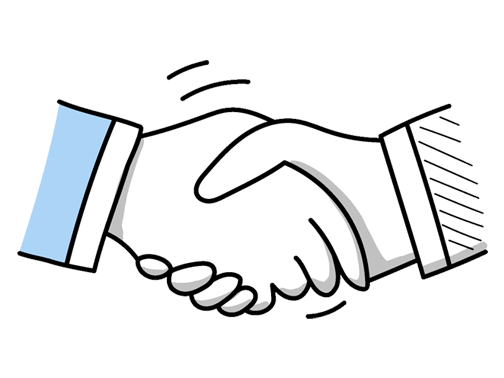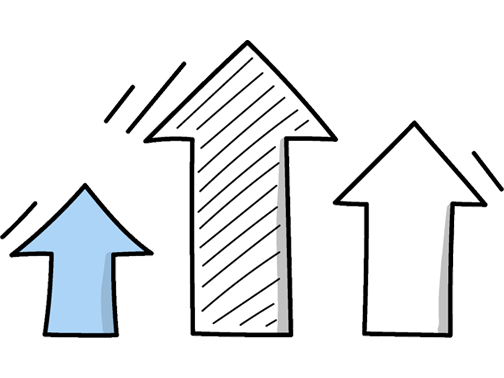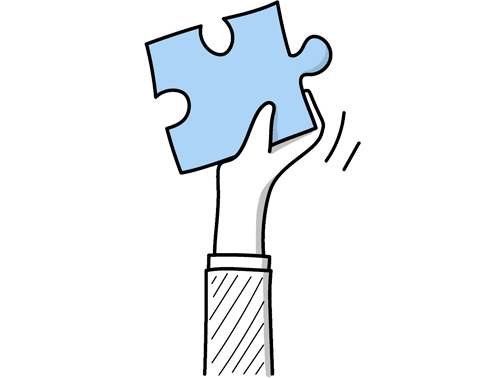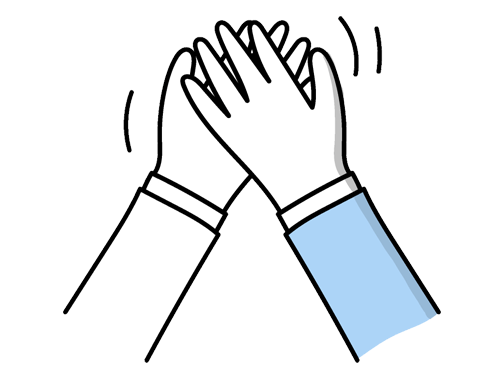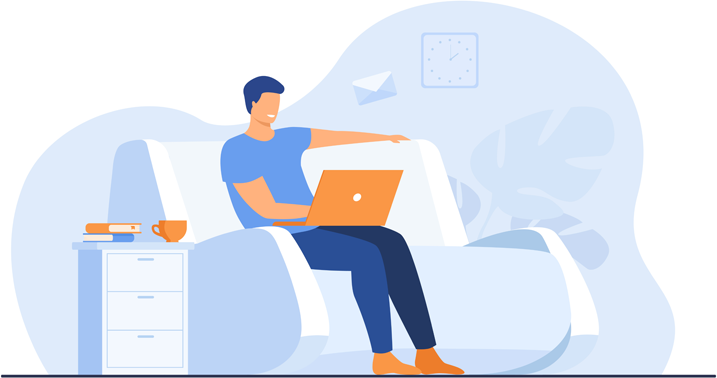Graphic Designer Interview Questions (2025 Guide)
Find out common Graphic Designer questions, how to answer, and tips for your next job interview
Practice Interviews Online - Identify your strengths and weakness in a realistic Graphic Designer mock interview, under 10 minutes
Practice Now »Graphic Designer Interview Questions
This question helps interviewers see how you accept and use constructive criticism to improve your work. You need to say that you listen carefully to feedback, stay open-minded, and use it to refine your designs while balancing your creative vision.
Example: I see feedback as a valuable part of growth. When someone shares their thoughts on my portfolio, I listen carefully and try to understand their perspective. For example, a client once suggested a different color approach, which opened my mind to new ideas and improved the final design. I take feedback as a chance to refine my work, not as criticism, and always aim to use it to make stronger, more effective designs.
Questions like this assess your ability to collaborate and keep everyone aligned, which is crucial in design projects to meet deadlines and client expectations. You need to say that you use clear, regular updates and actively listen to feedback to ensure everyone stays informed and involved.
Example: I make it a point to keep communication open and consistent, whether through quick check-ins or shared project platforms. For example, during a recent project, regular updates helped us catch design tweaks early. I also encourage feedback and make sure everyone feels comfortable sharing ideas, which keeps the team aligned and the project moving smoothly. Clear, ongoing dialogue really helps avoid misunderstandings and keeps creativity flowing.
This question helps the interviewer see how you balance creativity with practical needs to meet client goals effectively. You need to say you research the target audience, use iterative design with feedback, and apply problem-solving by exploring multiple concepts before choosing the best solution.
Example: When starting a project, I focus on understanding what the client truly needs and what the end goal is. From there, I aim to create designs that catch the eye but remain easy to use and clear in their message. If I hit a roadblock, I like to step back, rethink the approach, and test solutions until the design feels both fresh and practical—like when I revamped a website interface that improved user engagement by simplifying navigation without losing visual appeal.
This interview question checks if you actively keep up with industry changes to stay relevant and improve your work. You need to say that you regularly follow design blogs and social media to learn new trends, apply the latest tools in your projects, and seek feedback to keep evolving your skills.
Example: I make it a habit to explore design blogs, follow industry leaders on social media, and test out new tools that catch my eye. When something fresh aligns with a project, I’m keen to integrate it thoughtfully—whether that’s a new colour palette or software feature. Staying curious helps me keep my work relevant and ensures I’m always ready to adapt to the evolving creative landscape.
Questions like this assess your technical skills and how you apply them to real projects. You need to mention the specific 3D software you have used, describe how you applied it in your work, and briefly highlight any challenges you overcame with those tools.
Example: Yes, I’ve used Blender and SketchUp in past projects to create 3D mock-ups and visualisations. For example, I designed product packaging concepts in 3D to better understand dimensions and materials, which helped avoid costly revisions later. Sometimes, getting textures right was tricky, but experimenting with lighting and material settings helped me achieve more realistic results, improving the overall presentation for clients.
What they want to understand is how you approach design challenges, showcase your creativity, and learn from your experiences. You need to clearly explain your design process, highlight a project with unique elements, and briefly discuss challenges you overcame and lessons learned.
Example: Certainly. In my portfolio, one project that stands out is a branding campaign I developed for a local charity. I began by research to understand their mission, then sketched concepts that balanced warmth with professionalism. The challenge was creating something fresh on a tight budget, which taught me to be resourceful with limited assets. Seeing the client’s positive response and increased engagement was genuinely rewarding and reinforced my passion for thoughtful design.
Employers ask this to see how you handle pressure and stay flexible without sacrificing quality. You need to say how you quickly adjusted your approach, prioritized tasks, and still delivered a strong design on time.
Example: Certainly. During a recent project, a client moved the deadline up unexpectedly. I quickly shifted from my usual detailed brainstorming to a more focused approach, prioritising key elements that would deliver impact without unnecessary frills. By streamlining the process and staying in close communication with the client, I managed to produce a polished design on time that still met their vision and needs.
Interviewers ask this question to understand how you generate creative solutions and work collaboratively under pressure. You need to explain that you gather and organize ideas using tools like mind maps or sketches, involve others through brainstorming sessions for feedback, and stay flexible by adapting your concepts when faced with challenges.
Example: When I start brainstorming, I like to sketch out all ideas quickly to see what sticks, then organise them into themes. I often bounce concepts off colleagues to get fresh perspectives, which can spark new directions. If something isn’t working, I switch up my approach—maybe experimenting with different styles or tools—until I find a solution that feels both creative and practical. For example, in my last project, this helped turn vague ideas into a clear visual story.
Questions like this assess your practical skills and familiarity with industry-standard tools, which are crucial for creating effective web layouts and collaborating with teams. You need to clearly state your hands-on experience with Sketch or Figma, highlighting specific projects or tasks where you used them to design user-friendly interfaces.
Example: I’ve worked on several projects where I designed responsive websites using Figma, focusing on user experience and clean layouts. I find it intuitive for collaboration and prototyping. Sketch is also part of my toolkit, especially for creating detailed UI elements. For example, I recently redesigned a client’s landing page, improving navigation and engagement through thoughtful wireframing and interactive prototypes.
This question helps the interviewer assess your technical skills and how effectively you apply them to real projects. In your answer, clearly name the key software you use, give specific examples of how you’ve used them to achieve great results, and mention your ability to learn new tools when needed.
Example: I’m most comfortable with Adobe Creative Suite, especially Photoshop and Illustrator, which I’ve used to create everything from branding materials to digital ads. In a recent project, these tools helped me deliver sharp visuals under tight deadlines. I’m also open to learning new software as needed—I picked up Figma last year to enhance collaboration on web design projects, which really improved the team workflow.
Employers ask this to see how you overcome challenges and stay productive under pressure. You need to explain that you take a step back to gain new perspectives, then seek inspiration or collaborate with others to restart your creativity.
Example: When I hit a creative block, I usually take a step back and change my environment—sometimes a quick walk or browsing design blogs helps reset my perspective. I also find talking through ideas with colleagues sparks fresh inspiration. It’s about staying patient and open, allowing new concepts to come naturally rather than forcing them. That shift often turns a block into a breakthrough.
Questions like this assess your problem-solving skills and how you handle real design challenges. Clearly describe the problem you faced, explain the steps you took to resolve it, and highlight the positive results or lessons learned from your solution.
Example: In a recent project, a client’s brand guidelines were outdated and didn’t translate well across digital platforms. I reviewed their materials, identified inconsistencies, and redesigned key elements for clarity and flexibility. This not only modernised their look but improved user engagement online. It taught me the importance of balancing creativity with practical usability, ensuring designs work well in every context.
Employers ask this to see how well you collaborate and communicate with others to meet project goals. You need to explain a specific example where you listened to the client’s needs, adapted your design based on feedback, and worked together to successfully complete the project.
Example: In a recent project, I collaborated closely with a marketing manager to redesign their website. We held regular check-ins to ensure the visuals reflected their brand identity and resonated with their audience. By listening carefully to their feedback and suggesting creative alternatives when challenges arose, we achieved a design that met their goals and was well-received by users. It was a great example of how open communication shapes successful outcomes.
Interviewers ask this question to see if you can create designs that truly reflect the client's brand and meet their expectations. In your answer, explain how you research the client's brand guidelines and values upfront, then incorporate their feedback throughout the design process to balance creativity with brand consistency.
Example: To make sure my designs really fit the client’s brand, I start by diving deep into their identity and what matters most to them. I keep an open line for feedback, adjusting the work to match their vision while still adding a creative touch. For example, with a recent project, I balanced bold concepts with their established style to keep everything fresh but familiar.
This interview question helps the interviewer understand how you approach creative challenges and solve problems systematically. You need to clearly outline the problem or client brief, walk them through your design steps including research and revisions, and briefly reflect on the outcome and any obstacles you overcame.
Example: One project involved redesigning a local café’s branding to attract younger customers. I started by researching their target audience and sketching ideas that felt fresh but true to the café’s vibe. Through several revisions and feedback sessions, I refined the colour palette and typography to strike the right balance. The client loved the result, and it boosted their social media engagement significantly, which was really rewarding.
This question aims to understand how you organize your work and approach problems creatively. You need to explain your steps clearly, from initial research and brainstorming to drafting, revising, and finalizing the design.
Example: Sure! Here’s a natural, polished response you can use:
I usually start by understanding the client’s vision and gathering inspiration. Then, I sketch out ideas and explore different concepts digitally. After choosing the strongest direction, I refine the design with attention to detail and colour. I like to get feedback early on to ensure it’s on track. For example, when redesigning a local café’s logo, this approach helped create something fresh that really resonated with their customers.
Interviewers ask this to see how you handle pressure and make choices that balance creativity with practicality. You need to briefly describe the situation, your quick decision, and how it led to a positive result or learning experience.
Example: In a previous project, a client changed their brief last minute, requiring a new banner design within an hour. I quickly assessed the key message and simplified the layout, focusing on bold typography and strong visuals. The client was pleased with how clear and impactful the design was despite the tight deadline, and it went live on schedule without any issues.
Hiring managers ask this to see how you collaborate and leverage your strengths in a team setting. You need to explain your usual role, like leading design or supporting ideas, and how your contributions help the team meet goals effectively.
Example: In team projects, I usually take on the role of a collaborator who brings creative ideas while staying open to feedback. I focus on blending my design skills with the team’s vision to create something cohesive and impactful. For example, in a recent project, I helped align our concepts by suggesting visual themes everyone could build on, which really helped us deliver a unified final product.
Interviewers ask this question to assess your technical skills and how effectively you use industry-standard tools to solve design problems. You should explain your experience with Photoshop, Illustrator, and InDesign by describing specific projects and how you leveraged their features to overcome design challenges.
Example: I’ve worked extensively with Photoshop, Illustrator, and InDesign to bring ideas to life, whether retouching images, creating vector graphics, or laying out multi-page documents. I focus on finding the best tool for each part of a project and keep files well-organized for smooth collaboration. For example, I often set up shared libraries in Creative Cloud to ensure consistency across team projects and streamline feedback.
What they want to understand is how you handle constructive criticism and adapt your work to meet client or team expectations. You need to say that you actively listen to feedback, evaluate it objectively, and use it to improve your designs while staying true to the project goals.
Example: I see feedback as a valuable part of the design journey. When I receive input, I take time to understand the perspective behind it and reflect on how it can improve the work. For example, in a recent project, a client’s suggestion helped me rethink the colour palette, which made the final design more impactful. I try to stay open and use feedback to refine ideas without losing the original vision.
What they want to understand is how you curate your work to best represent your skills and growth while fitting the company’s needs. You should explain that you select pieces demonstrating your strongest skills, creative development, and relevance to the company’s style and audience.
Example: When choosing work for my portfolio, I look for projects that highlight both my creativity and problem-solving skills. I like to include pieces that show how I’ve grown and experimented with different styles over time. For example, if a company values clean, minimal design, I’ll feature work that reflects that aesthetic to show I understand and can contribute to their vision.
Interviewers ask this to see if you can work well with others and keep projects running smoothly. You should explain that you communicate clearly, schedule regular meetings to align tasks, and stay open to feedback to improve the final design.
Example: When working with copywriters or developers, I make sure we’re all clear on the project goals from the start. I like to keep communication open—checking in regularly to share progress and gather feedback. For example, if a developer suggests a different layout for better functionality, I’m happy to adapt the design while keeping the overall vision intact. It’s about balancing creativity with practical needs to deliver the best result together.
Interviewers ask this question to gauge your problem-solving skills, creativity, and resilience under pressure. You need to briefly describe the project’s goals and challenges, explain the steps you took to overcome them, and highlight the positive results and lessons you gained.
Example: One of my toughest projects involved redesigning a brand’s entire visual identity under a tight deadline. Balancing client expectations with creative innovation pushed me to prioritise clear communication and agile work. By breaking down tasks and seeking regular feedback, I kept things on track. The result was a fresh, cohesive design that boosted the client’s engagement, and I learned how valuable adaptability and collaboration are in high-pressure situations.
Hiring managers ask this question to see if you can collaborate effectively and resolve issues without escalating tension. You need to say you listen to everyone's perspective calmly and work together to find a solution that benefits the team.
Example: When conflicts arise, I listen carefully to everyone’s perspective to understand the root cause. I find that open, respectful communication helps us find common ground. For example, in a previous project, a differing design opinion was resolved by discussing our goals and merging ideas, which improved the final outcome. It’s important to stay calm and focus on the shared objective rather than personal differences.
Questions like this assess your ability to manage time and communicate effectively under pressure. You need to say that you organize tasks by urgency and impact, keep clients or teammates informed, and stay flexible to adjust priorities as situations change.
Example: When juggling several projects with tight deadlines, I start by assessing which tasks have the most immediate impact and tackle those first. I keep open communication with clients and the team to manage expectations and adjust plans if needed. For example, if a client suddenly needs a quick revision, I’m ready to shift gears without losing momentum, ensuring all projects move forward smoothly.
Ace your next Graphic Designer interview with even more questions and answers
Common Interview Questions To Expect
The interviewer is looking for a candidate to demonstrate their skills, experience, and passion for the role. Answers should highlight relevant qualifications and how they align with the company's needs.
Example: You should hire me for this position because I have a strong background in graphic design with a degree in the field. I am passionate about creating visually appealing designs that effectively communicate a message. My experience working with various clients has equipped me with the skills needed to excel in this role.
Candidates can answer by stating a specific salary range, mentioning their research on industry standards, or asking about the company's budget. Interviewers are looking for candidates who are realistic, confident, and have done their homework on salary expectations.
Example: I've done some research on industry standards for graphic designers in the UK, and I'm looking for a salary in the range of £25,000 to £30,000. I want to make sure that my compensation reflects my skills and experience in the field. Can you tell me more about the salary range for this position at your company?
The interviewer is looking for examples of how you manage stress and stay productive under pressure. You can discuss your problem-solving skills, time management techniques, and ability to prioritize tasks effectively.
Example: I handle pressure by staying organized and breaking down tasks into smaller, manageable steps. I also make sure to communicate with my team and ask for help when needed. Prioritizing deadlines and staying focused on the end goal helps me stay productive under pressure.
The interviewer is looking for examples of how you have collaborated with others, communicated effectively, and contributed to team success. Be sure to highlight specific projects and outcomes.
Example: Sure! In my previous role as a graphic designer, I worked closely with a team of designers and developers to create a new website for a client. I communicated regularly with team members to ensure we were all on the same page and collaborated on design ideas to meet the client's needs. The project was a success and the client was thrilled with the final result.
The interviewer is looking for insight into your personal drive and passion for your work. You can answer by discussing your love for creativity, problem-solving, or achieving goals.
Example: What motivates me as a graphic designer is the opportunity to bring my creative ideas to life and solve visual challenges. I thrive on setting goals for myself and pushing to exceed them, whether it's through a new design project or learning a new skill. Ultimately, seeing the impact of my work and the satisfaction it brings to clients is what keeps me motivated in this field.
Company Research Tips
The company's official website is a goldmine of information. Look for details about the company's history, mission, vision, and values. Pay special attention to their portfolio or projects section to understand the kind of work they do. This will give you an idea of their design style and preferences. Also, check their blog or news section to stay updated with their latest projects or achievements.
Tip: Focus on the aesthetics, layout, and design elements of the website. As a graphic designer, your interviewer may expect you to have an opinion on these aspects.
Social media platforms provide a more informal view of the company. Check their LinkedIn, Twitter, Facebook, Instagram, and other relevant platforms. Look at the kind of content they post, the design elements they use, and how they engage with their audience. This can give you insights into their brand personality and culture.
Tip: Pay attention to the comments and reviews. They can provide valuable insights into the company's reputation and customer satisfaction.
Understanding the company's competitors can give you a broader view of the industry and the company's position within it. Look at the competitors' design styles, their strengths, and weaknesses. This can help you understand what sets your prospective company apart and how you can contribute to enhancing its competitive edge.
Tip: Use tools like SimilarWeb or Alexa to get information about the competitors and the industry.
Websites like Glassdoor provide reviews from current and former employees. These reviews can give you insights into the company culture, work environment, management style, and more. However, take these reviews with a grain of salt as they can be biased.
Tip: Look for patterns in reviews. If a particular issue is mentioned repeatedly, it's likely a genuine concern.
What to wear to an Graphic Designer interview
- Smart casual attire
- Clean, well-fitted jeans
- A stylish blazer or jacket
- A neat, professional top
- Comfortable, polished shoes
- Minimal, tasteful accessories
- Avoid overly bright colors
- Ensure clothes are ironed
- Avoid wearing too much perfume
- Carry a professional bag or portfolio
